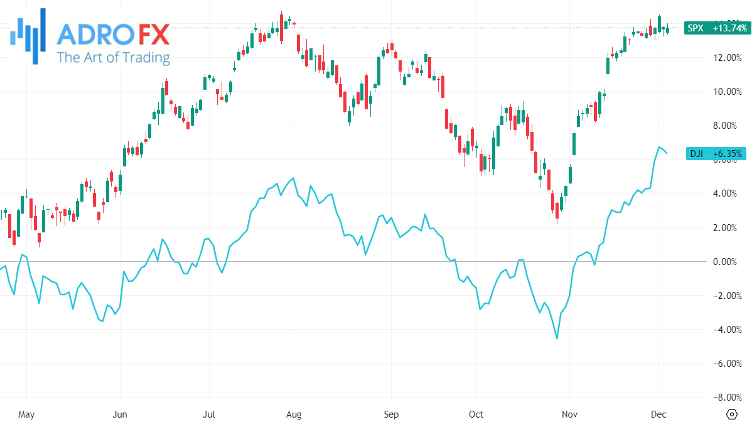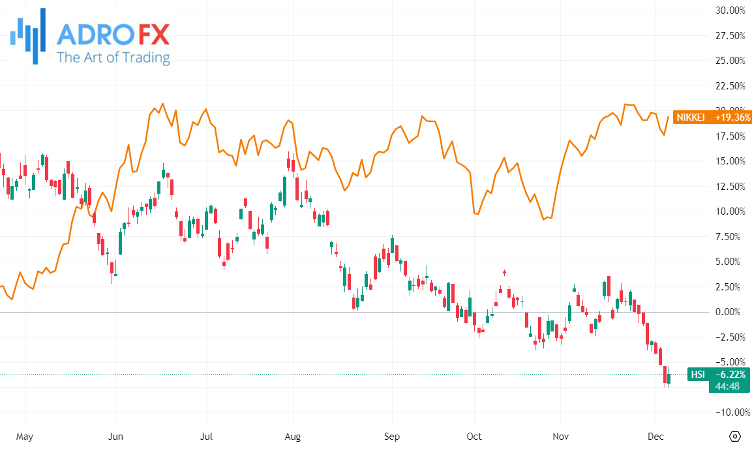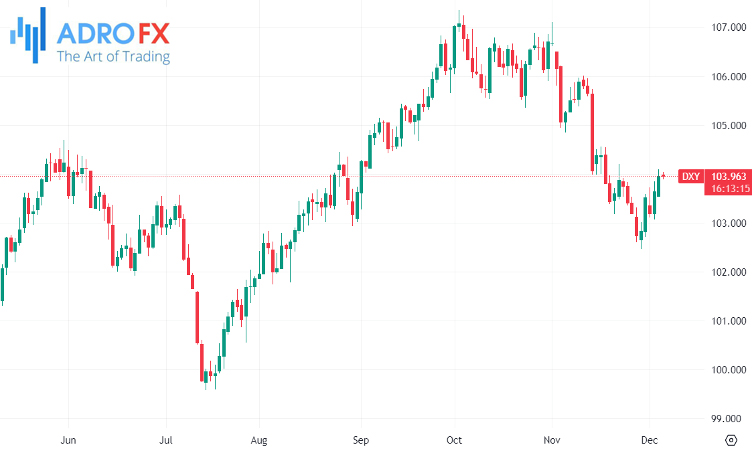Mixed Performances in US and European Stocks, Central Banks' Tightening Peaks, and Gold's Stabilization After Record Highs | Daily Market Analysis

Key events:
- USA - ADP Nonfarm Employment Change (Nov)
- Canada - BoC Interest Rate Decision
- USA - Crude Oil Inventories
US markets displayed a mixed performance, with the S&P500 exhibiting a volatile tone marked by a notable increase in losers compared to winners. This came amid the assessment of a stronger-than-expected November ISM Non-manufacturing survey. However, the mood was offset by a significant unexpected decline in October job openings, leading to another dip in 10-year Treasury yields.
In the same session, both the S&P500 and Dow Jones Industrial Average recorded marginal losses, contributing to modest declines in the broader market.

Meanwhile, European markets demonstrated strength, with the DAX achieving a new record high and closing at a record level. This positive momentum followed signals from ECB member Isabel Schnabel, indicating that rate hikes were concluding due to recent progress on inflation.
However, the FTSE100 experienced another lackluster session. The FTSE100's subdued performance was attributed to weaknesses in basic resources and energy sectors.

European stocks are poised for a positive opening, influenced by the Asia-Pacific market's optimistic trend, fueled by a decline in bond yields, signaling increased confidence that major central banks have reached the peak of their tightening cycles.
Japan's Nikkei share average surged by 1.8%, rebounding from a three-week low in the previous session, with chip industry giants Tokyo Electron and Advantest among the top three points gainers.
Hong Kong's Hang Seng overcame an initial dip, boosted by a 1.2% rise in its tech subindex. Mainland blue chips saw a modest uptick after briefly touching a nearly five-year low, as concerns lingered over Moody's downgrade warning for China's credit rating.

Combined with recent signals of Federal Reserve dovishness and remarks from ECB policymaker Isabel Schnabel suggesting further tightening is "rather unlikely," there's a growing perception that major central banks have concluded their tightening measures. The Bank of Canada is expected to reinforce this narrative with an anticipated "hold" decision later in the day.
Benchmark government bond yields have sharply declined, reaching multi-month lows in Japan, mirroring the drop in US Treasury yields overnight.
While the US economy shows signs of a slowdown, indications still point towards a probable soft landing. The labor market takes center stage this week, with the ADP employment report scheduled for later in the day, setting the stage for Friday's monthly payrolls report.
Macro data from major European economies is also imminent, featuring Germany's industrial orders, the UK's release of purchasing manager surveys, and retail sales figures from the euro area.
Meanwhile, the US dollar sustained its recent rebound, impacting commodity currencies the most.

The Australian dollar, in particular, emerged as the weakest performer for the day. This decline followed the Reserve Bank of Australia's decision to keep rates unchanged at 4.35%. While Governor Bullock hinted at the possibility of another hike, uncertainties over monetary policy lags suggested that the RBA is currently on hold, with the next move likely to be cut.

Gold prices exhibited minimal movement in Asian trading on Wednesday, stabilizing after a notable decline from recent record highs. Traders are now awaiting further signals on when the Federal Reserve might initiate interest rate cuts.
The JOLTs job openings reading for October, which came in softer than expected, raised some optimism about a moderating labor market. However, attention remains focused on the upcoming nonfarm payrolls reading for November scheduled for release this Friday.

The precious metal had commenced the week at record highs surpassing $2,100 per ounce, propelled by seemingly less hawkish statements from Fed Chair Jerome Powell and increased demand for safe-haven assets amid heightened tensions in the Middle East.
However, it experienced a sharp retreat from those record levels as uncertainty surrounding the Fed's stance contributed to a recovery in the dollar. Despite the pullback, gold prices continued to trade well above the $2,000 per ounce mark.









